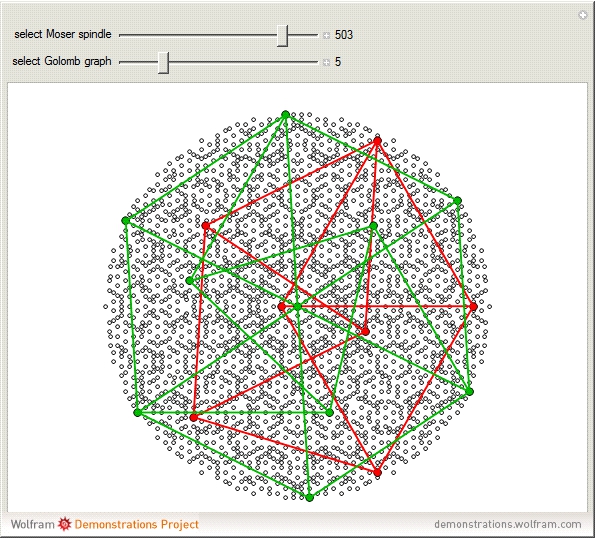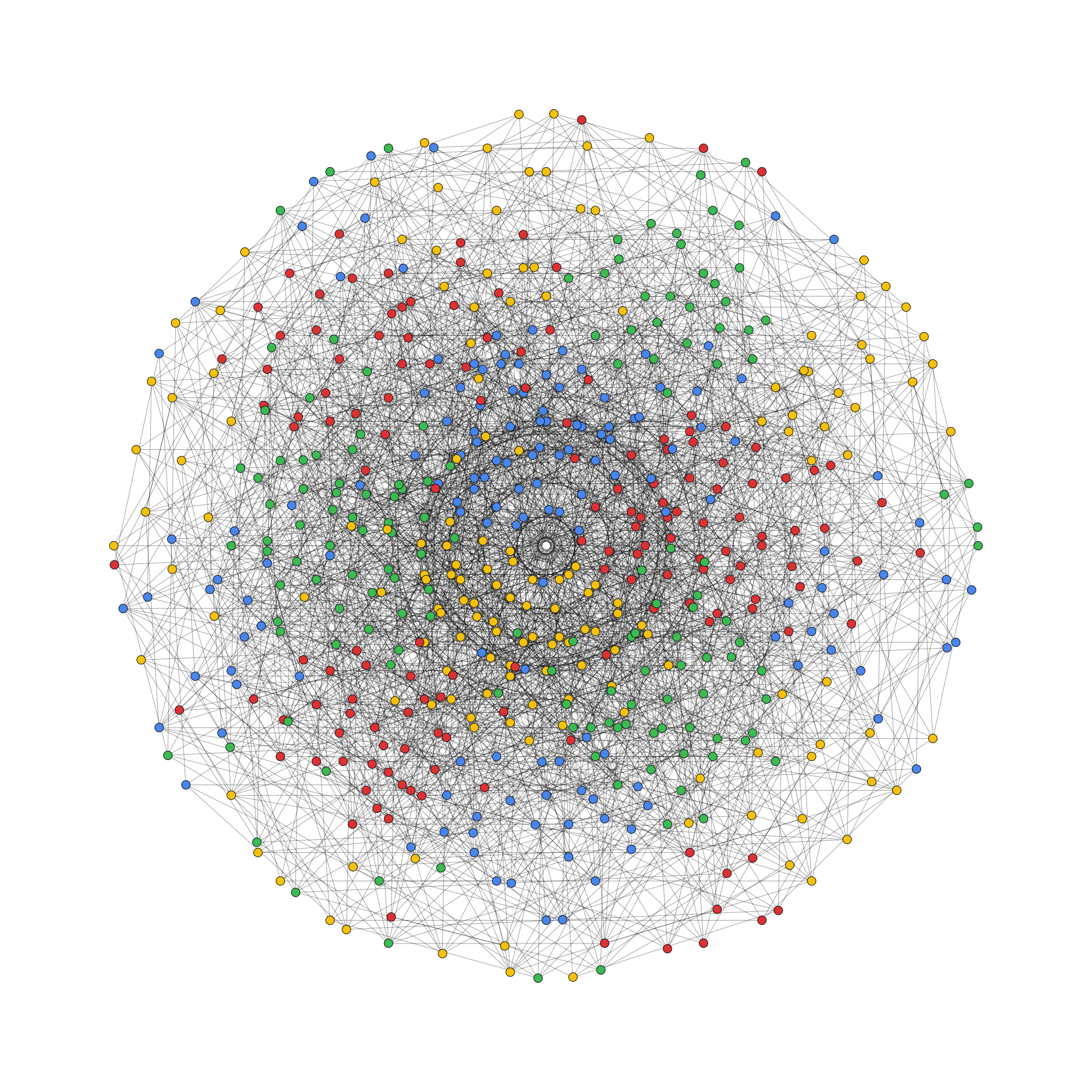Congratulations to Meghan Markle and Prince Harry on what is undoubtedly the most energetic Royal Wedding!
In other news, following on from Aubrey de Grey’s 5-chromatic unit-distance graph, there has been an effort to study the algebraic structure of the graphs. Specifically, viewing the vertices as points in the complex plane, one can ask what number fields contain the vertices of the unit-distance graphs.
In particular, it was noted that both Moser’s spindle and Golomb’s graph, the smallest examples of 4-chromatic unit-distance graphs, lie in the ring , where
is a complex number with real part
and absolute value 1. Ed Pegg Jr produced a beautiful demonstration of this:

Philip Gibbs showed that the entire ring, and consequently all graphs therein, can be coloured by a homomorphism to a four-element group. Consequently, Ed Pegg’s hope that the large unit-distance graph above is 5-chromatic was doomed to fail — but that is not too much of a worry now that we have de Grey’s 5-chromatic graph.
Several of Marijn Heule’s 5-chromatic graphs lie in . Apparently both this ring and
have homomorphic 5-colourings, so we cannot find a 6-chromatic unit-distance graph lying in either of these rings.
Incidentally, the record is a 610-vertex example, again due to Heule:


Is the graph in the image in \mathbb{Z}[\omega_1, \omega_3, \omega_4]?